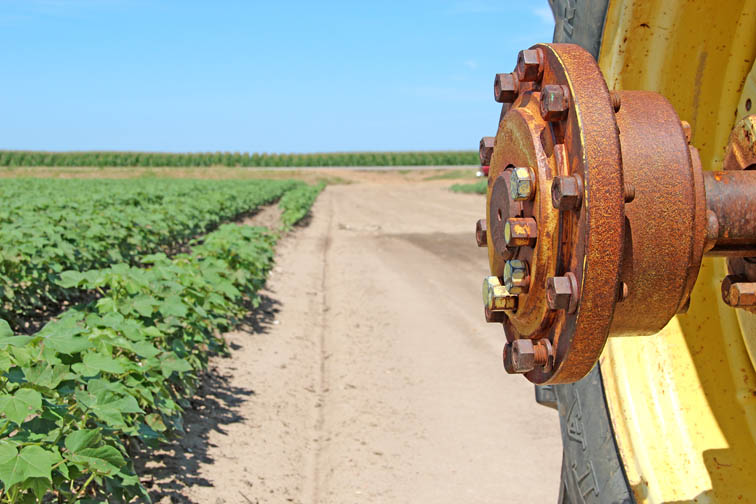
Have U.S. cotton producers been too hasty in their plans for wholesale shifts to grain this season? That’s a question many were asking after listening to Joe Nicosia, executive vice president, Louis Dreyfus Commodities, speaking at an ag update meeting at the Mid-South Farm and Gin Show.
Nicosia’s analysis showed a return over variable expenses of $406 per acre for cotton, $388 for corn and $394 for soybeans in Arkansas irrigated fields. For Georgia dryland, the returns were $225 per acre for cotton, $223 for corn and $185 for soybeans. The returns included cottonseed revenue.
“Don’t believe everything you read, which says the only thing you can plant is corn or soybeans, and everyone in the world should be doing it,” Nicosia said. “Take another look at your cotton numbers. We show it’s the most profitable crop to grow in the Southeast and depending on where you are, it’s the most profitable in the Delta. New crop corn is not $7, it’s $5.50.
Much of the newfound bullishness for cotton comes from the continuation of China’s policy to build its reserve of cotton.”
But there are concerns, including the possibility that China could one day become self-sufficient in cotton. “That should scare you because they are your largest customer. They buy half of your exports and are the largest importer in the world by far. Next year, USDA projects they will grow 33 million bales and use 34 million bales, a deficit of 1 million bales. That’s the worry. If we allow polyester to take over cotton’s position, and we lose the largest buyer in the world, what do we do.”
For the moment, opportunity is knocking.
“China is willing to support the price, they’re willing to hold their stocks and they’re willing to allow their mills to buy competitively-priced cotton. They want it, you got it. As cotton moves into the mid-80s, it’s given you a real opportunity.”
Nicosia added that speculators “are highly invested in this marketplace. They’re going to continue to push, and until we get rain in west Texas, they’re going to try to keep prices up. Use that as your opportunity. Look to price your cotton and buy some protection with call options. They’re not that expensive versus the risk.”
Cotton’s falling blend percentage is the industry’s biggest challenge today, and China’s cotton reserve policies are much to blame, according to Nicosia. “USDA projects China is going to import 14 million bales of cotton this year. Some of that is going to be competitively-priced cotton. Most of it will be priced high, from their own reserve. The problem is that polyester costs only 82 cents a pound to them.
“China’s blend has gone from 57 percent to 40 percent. If the cotton policy remains unchanged in China, China is going to become the primary supplier of synthetic textile and apparel, and the bottom line is that we buy what China sells. If we can get those blends back, we can increase cotton consumption in the world. That happens on price.”
At last year’s Mid-South Farm and Gin Show, Nicosia said it was critical that world produces a deficit in cotton in 2013-14. Today, however, he says a surplus “is okay because China is still willing to absorb it all.”
China has started to sell some of its reserve stock, Nicosia added. “They offered about a half million tons to its domestic industry. But it’s still at a really high price, substantially over the world price today.”
Nicosia said that China’s textile industry has been able to get around some of its import restrictions thanks to a clause in the WTO “that allows them to bring in unlimited imports if they pay a 40 percent tariff. For years, nobody paid attention to that. But the price differential got so wide that it actually worked, and mills started importing cotton.
“That became the source of the cheapest cotton and defined the bottom. In effect, the Chinese reserve program is a new world loan program. And it’s substantially higher than USDA’s. The best news is you don’t have to pay anything for it, and the taxpayers don’t have to pay anything for it.”
The Chinese buildup of stocks doesn’t show any signs of slowing down, according to Nicosia. “We’re in year two of this buildup. Last year, they started with 18.8 million bales. This year, they bought almost 29 million bales. At one point, they owned almost 50 million bales.”
Nicosia believes China will sell another 11.3 million bales, and end up with about 40 million bales in their reserve.
When and if China decides to destock their supplies of cotton, prices could drop to the 40s and perhaps the 30s, Nicosia said. “Eventually China’s cotton is going to move. We just have to be patient.”
About the Author(s)
You May Also Like






